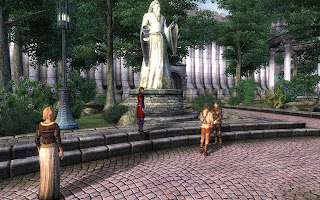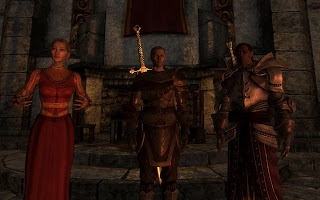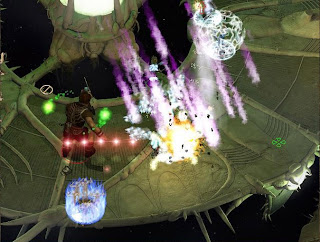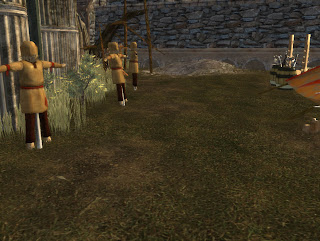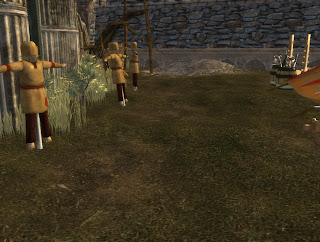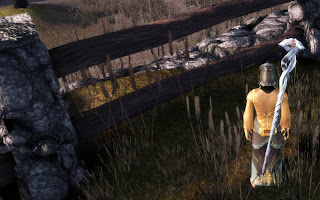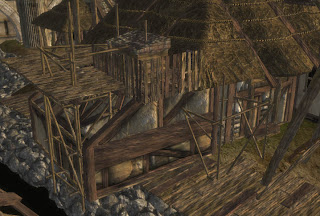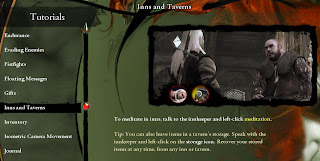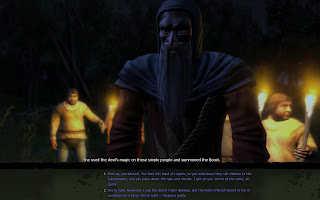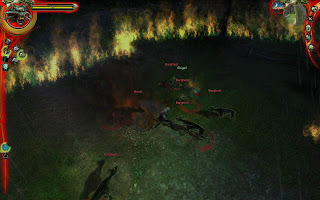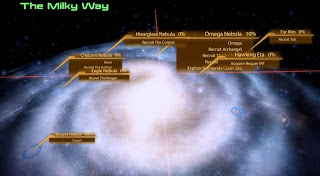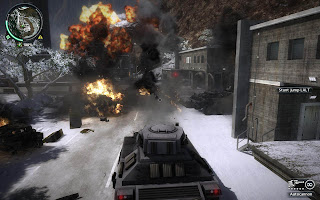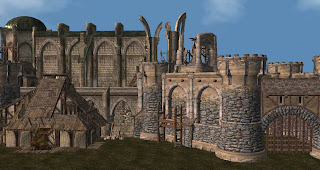So I've had a few comments of people disagreeing with my assessment of The Witcher. However, after playing some more, I'm afraid I can't relent on my previous assessment at all. I'd like to point out a couple more issues I have with the game. For those curious, yes, I am playing the Enhanced Edition. I've recently finished off the outskirts of Vizima and have been imprisoned in a dungeon beneath the city. I'm trying to continue, but I'm rapidly losing faith in the game. Why? Well, strap yourself in and I'll explain... this is a
long post.
To set the scene, I'm shut out of a major city, and completing quests in order to gain the trust of locals so that they will give me the means to enter the city. As part of one of these quests, I had a fight with some members of the group that attacked the fortress at the start of the game. Interestingly enough, this seemed to be the first point at which one of the choices I'd made had an effect. Choice and consequence are some of the best aspects of RPGs, so this should be right up my alley. In the aforementioned castle, I chose to try to protect the secrets of the Witchers rather than fight a dangerous beast. Apparently this made a fight turn out differently. How do I know, you ask? Because the game explicitly told me so.
A bridge over troubled choices
Some might argue this is a good thing, so that you get a clear indication of the effects of your choices, but the means in which that information was delivered was terrible. A slideshow of black and white images was presented, with Geralt giving a narration about how his choice could have "resulted in a different fight here today". The game effectively speaks to you directly as a player telling you "a past choice just mattered here by making this fight different."
For starters, having a slightly different nameless enemy in a fight is not something I consider providing a meaningful consequence. Secondly, telling the player in such a blatant manner is such a crass way of telling them their choice is meaningful. To be perfectly honest, I'd be happier if the results of choices were integrated seamlessly into the campaign and the story-telling - maybe by having people reference a decision that you've made previously. Meaningful and realistic consequences within games aren't created by drawing attention to the fact that something could have occurred differently, they're created by making it seem as though your choice is the only reality. It's not up to the game to tell you "hey, things could be different if you'd made a different choice". That merely ruins the illusion created by the game world and highlights its artificial nature, weakening the narrative rather than strengthening it.
Shortly after was when I received the first huge proverbial kick in the teeth, in an experience with the local inn. After talking to an innkeeper, I received the option to store some items. Naturally, I was curious about this, so decided to check my journal....
Retrieve at any time? Sounds good!
But the game once again proved it was not trustworthy. Without warning, the inn came under attack by a group of thugs. They surrounded and threatened one of Geralt's friends, and had slaughtered the innkeeper before I arrived. Now, with the innkeeper dead, my immediate thought was: "How do I retrieve those items I stored?" Given the journal specifically told me that I could retrieve stored items at any time, I must be able to get to them, right?
Wrong. That's right, the information that's provided as meta-game information directly to the player on the mechanics of how the game works is not only inaccurate, but outright misleading. Being somewhat of an item hoarder, I had no kind words for the designers at that point for making an inexcusable deception. If I had been told about this mechanic by an NPC, that would be fine, because NPCs are unreliable sources of information. But something that tells you about the game mechanics
as a player should always be accurate.
Still, after these two fairly glaring flaws, I still pushed on. Eventually I was presented with one of the game's lauded "grey" moral choices. I had to choose between supporting a witch who was ostracised by a community for selling some items used for misdeeds, or supporting the raping, murdering, enslaving villages who wanted to burn that witch. For one, this was a really mediocre "grey morality" choice. Supporting the immoral and generally despicable villagers wasn't really a thought I entertained for a second. However, the presentation of that choice was awful to the point that I didn't actually want to pick either side. Why? Because after the lengthy exposition of the events that had transpired, I was presented with the following two dialogue choices:
I hate both of these lines
I was left wondering for a few minutes how this went so hideously wrong. The setup was there, and it looked like it was going to push me to a tough decision, but then I got pummeled with reasons to detest the villagers. The guard raped a girl, the reverend allowed children to be kidnapped, and the smuggler traded with slavers, and collectively, they caused "The Beast" (a deadly dog wreathed in flame) that was responsible for the deaths of countless villagers. They give arguments that are supposed to paint the witch in a negative light, but they do so in such a weak and ineffectual manner. I kept waiting for them to elaborate on her culpability and how she'd lied to me, but all I got were weak excuses. On the other hand, the witch was larger a victim of circumstance. She attempted to provide shelter for a young boy, and at her worst she provided a poison for the raped woman to commit suicide. Her crimes paled into significance compared to her accusers.
However, the issue wasn't the weakness of the choice itself. The thing that I absolutely detested about this decision was that either option was so laden with rhetoric and rationale in addition to the actual choice itself. In picking one of the options, I wasn't only making the choice, I was being forced into a specific motivation for that choice. That is terrible decision making in a role playing game, and something that should never be forced on a player. A writer must allow the player to make the decision, perhaps with an emotional flavour, but
never the specific or detailed reasoning behind that decision. As soon as that reasoning does not match the player's own reasoning, and in 99% of cases that is exactly what will happen, the "power" of making that choice is effectively destroyed for the player because they're being forced to make a decision for a reason they don't agree with. So I gritted my teeth, and made the right decision for the wrong reason and hoped things would get better.
The only problem was that after this point, it got even worse. I was forced into a fight with the "boss" of the area - the creature known as "The Beast". Boss fights after lengthy dialogues and cutscenes are a terrible, terrible idea. I don't care if they're skippable, but it is practically unforgivable if they aren't - I'm looking at you, Mass Effect. If you're a designer, never, never, ever, do this. If you have to have a fight immediately after a dialogue cutscene, please try to put an autosave just before the fight starts so the player doesn't have to sit through it again. All it does is annoy the player. If you want more proof, player Prince of Persia: The Two Thrones. When you get the twin boss fight after a chariot race, and die repeatedly, you'll know exactly what I mean.
If only I had a spectral frisbee to distract them...
But the icing on the proverbial cake was the fight itself. Pitted against The Beast and his menagerie of spectral dogs, I had to dispatch his companions before dealing with the chief enemy itself. Standard fare for a boss fight, but the fight was anything but straightforward. While killing off his minions, the boss himself would deal inordinate amounts of damage to Geralt, shredding his health to a pathetic amount by the time it turned into a one on one fight. Failing several times, I resorted to using potions to increase my health regeneration during the fight, but I was still unable to prevail. So I decided to move around a little more in the hope that with superior position I would win. This was an abject failure, as I moved to close to the boundary of the fighting zone, caught on fire and stood there helplessly while being eaten alive.
So I resorted to using my magic abilities repeatedly. This helped significantly, and perhaps I should have been doing it from the start, but I was still not able to win. At this point, after perhaps a dozen deaths, I'm not sure what I'm doing wrong. I'm not missing any of the clicks in the (hideous) click-timing combat, but I'm still getting comfortably destroyed by the boss and his minions. Let's not forget that I'm being forced to skip through a lengthy dialogue and cutscene every single time. However, on about the 14th or so attempt, my magic spell happens to stun The Beast as I unleash it a couple of seconds into the fight. This is only by virtue of me having upgraded it and given it the chance to provide this effect. Based on previous combat, I've been able to instantly kill stunned enemies, so I click on The Beast in the hope that this might occur... and success! The Beast and all its minions die instantly, resulting in a boss fight that's over in a total of five seconds.
This is pretty much the pinnacle of terrible combat or encounter design. An encounter that results in the player's death except due to sheer luck, at which point it ends in victory after a few seconds signifies a system that doesn't reward intelligent play, but instead the gross chance of being fortunate enough to have an "instant-kill" percentage effect come off. The game already has something that relies entirely on luck and not on skill: its "dice poker" mini-game. When combat is reduced to this level, it's not only a chore, but an annoyance.
I'm trying hard to like The Witcher, I really am. But every time I begin to think it might not be so bad, the game demonstrates an abject disrespect of both the player and the roleplaying genre in general. There might be some things that The Witcher has done right (as its advocates keep telling me), but they are just so horribly overshadowed by glaring shortcomings that I'm finding it extremely hard to motivate myself to click that button that says "Play".

